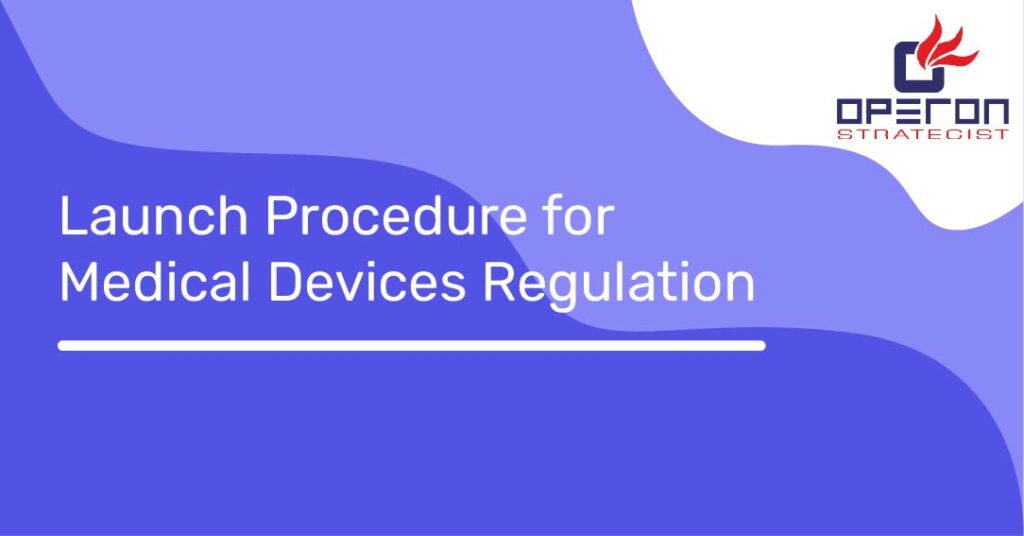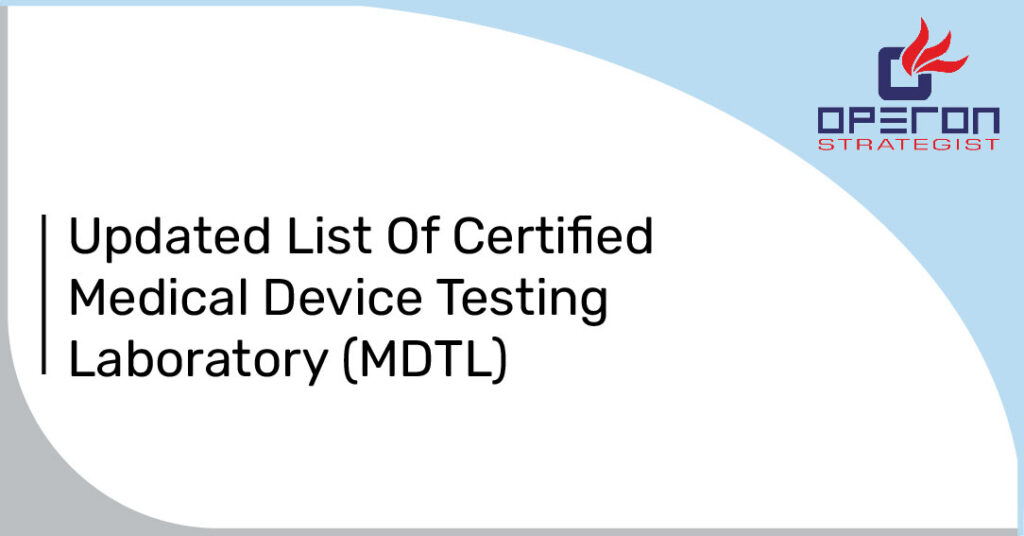This regulatory topic has turned out to be progressively relevant, in front of the commencement to the EU\’s new medical device and in-vitro diagnostic rules, set to produce results on May 26, 2020, and 2022, respectively. Presently, there are more than 500,000 sorts of medical devices and in-vitro diagnostic medical devices on the EU market. Powerful medical devices regulation that guarantees a supply of safe devices, and permits monitoring of the introduction and utilization of medical devices, is fundamental.
The new Medical Devices Regulation (EU) 2017/745 was announced in the Official Journal of the European Union and came into force on May 5, 2017, supplanting two existing Directives:
1. Regulation (EU) 2017/745 of the European Parliament and of the Council of April 5, 2017, on medical devices, changing Directive 2001/83/EC, Regulation (EC) No 178/2002 and Regulation (EC) No 1223/2009 and revoking Council Directives 90/385/EEC and 93/42/EEC
2. Regulation (EU) 2017/746 of the European Parliament and of the Council of April 5, 2017, on in-vitro diagnostic medical devices and cancelling Directive 98/79/EC and Commission Decision 2010/227/EU
The new regulations apply after a transitional period. In particular, three years after passage into the power of Regulation (EU) 2017/745 on medical devices (May 26, 2020), and five years after entry into force (May 26, 2022) of Regulation (EU) 2017/746 on in-vitro diagnostic medical devices. Existing devices which have been CE marked under the current Medical Device Directive (MDD) must be recertified to comply with the new MDR. Read for MDR
The new regulations mean to upgrade patient safety and modernise public health, by presenting an improved governance structure around the definition, supervision, detectability and risk-based arrangement system for medical device equipment.
Looking Forward To CE Marking Process For Medical Devices ?
We help you in the process of making a defined and comprehensive technical file with all product details required for CE marking. Contact UsWhatsApp
Some key elements of the new medical devices regulation include:
- Expansion of the definition of medical devices: The broadness of medical devices has been essentially extended and incorporates certain products which recently did not fall under the meaning of a medical device. For instance, eye contact lens solution, liposuction equipment and laser equipment used for hair and tattoo clearance.
- Enhanced vigilance and market surveillance: When gadgets are accessible for use on the market, manufacturers will be obliged to gather information about their performance, and EU countries will facilitate all the more intently in the field of market surveillance. The new regulations will guarantee indispensable data which is easy to find through more stringent traceability measures. For example, patients will receive an implant card with all the basic data, and a unique device identifier will be mandatory for each item.
- EUDAMED database: The Commission will set up a centralised EU database for the capacity of data on medical devices (EUDAMED). This will encourage the communication of both pre- and post-approval product data between economic operators, the Commission, member states and, in some cases, healthcare professionals and people in general.
- Tighter regulatory controls: The new principles will force more tightly pre-market controls on high-risk devices, and apply an increasingly unbending way to deal with the direction of both clinical evaluation and the clinical investigation of clinical trials. The MDR will require device manufacturers to conduct clinical performance studies and provide give proof of security and execution, proportionate with the risk associated with a given device. EU cross-border clinical trials will be subject to a single coordinated assessment. Stricter requirements on the use of hazardous substances will also be introduced, and device manufacturers will be required to collect and retain post-market clinical data, as part of the ongoing assessment of potential safety risks.
- Introduction of a risk-based classification system: A new system for risk classification, in line with international guidelines, will apply to in-vitro diagnostic medical devices, in addition to a wider medical device classifications definition for all products. While the classification system (Class III, Class IIa, Class IIb and Class I) will be retained, some rules have been tightened. This may result in a significant number of product types – previously exempt from the regulations – now being included in the scope. Manufacturers will need to demonstrate that their medical device meets the requirements in the MDR and IVDR by carrying out a conformity assessment. The assessment route depends on the type and device classification.
- Post Market Surveillance System (PMSS): As part of their quality management system, manufacturers must also establish a PMSS, which should be proportionate to the risk class and the type of device in question. Manufacturers will have to report all incidents, injuries and deaths into an EU portal that will contain relevant data, so patients have access to safety-related information.
- Responsible Person (RP): Medical device manufacturers and authorised representatives will be required to designate at least one person with responsibility for regulatory compliance; that person(s) must hold the prerequisite academic expertise and work experience in the field of medical devices.
- Financial compensation measures must be in place: The regulations require manufacturers to have measures in place to provide sufficient financial coverage in respect of their potential liability. Such financial coverage must be proportionate to the risk class, type of device and the size of the enterprise.
Medical device manufacturers must prepare for regulatory changes
During the present transition period up to May 2020, manufacturers can choose to comply with either the existing MDD/AIMDD legislation requirements or the new MDR. However, like all medical device products marketed in the EU must eventually comply with the MDR, and any changes to pre-MDR products after full application of the MDR negate MDD compliance, companies are advised to define their strategies for the regulatory transition.
Comparing and contrasting regulatory differences between the existing MDD and the new MDR is important. As it is highly likely for most legacy devices that a review of MDR requirements will identify regulatory issues that will need to be addressed for every device. Complying with the new MDR will prove a high task for most medical device manufacturers. Guidance and implementing measures under the current Directives will be reviewed by authorities over the next few years, in light of the new regulations.
At this present stage, the European Commission has a published list of legally non-binding guidance documents adopted by the Medical Device Coordination Group, to support the industry\’s efforts to apply relevant provisions of the MDR. These include consensus statements, informative documents and MEDDEVs for medical device manufacturers, authorised representatives, notified bodies, and competent authorities.
In addition, on October 30, 2018, the European Commission published the most recent version of the Borderline & Classification Manual. This document provides guidance on establishing the status of medical devices and IVDs, as well as their risk classifications. The current version, version 1.20, replaces version 1.19 released in April 2018. The new medical device regulations in Europe present a huge challenge to manufacturers, but could also deliver improved confidence in the consistency and effectiveness of the EU regulatory process. We at Operon Strategist help you in the process of making a defined and comprehensive technical file with all product details required for CE marking.
How to register medical devices in Europe? In order to market medical devices in the European Union, the CE certification is needed. This certification states that the devices meet all the regulatory requirements of the Medical Devices Directive [MDD]. The process for the approval of Medical Device in Europe is Classification of the Medical Devices based on the MDD guidelines.
- For all Classes Is II and III except class I non (non-sterile, non-measuring) implement Quality Management System (QMS) according to Annex II or V of the MDD
Most of the companies apply for the ISO 13458 standard to achieve QMS compliance.
- For class I non (non-sterile, non-measuring) QMS is not formally required. However, a PMS procedure is required, though not audited by Notified Bodies.
Medical Device Directives(MDD) are the guidelines for CE Marking which after 2020 will be replaced with Medical Device Regulation. (MDR). Please read here to know more What is technical file for CE Marking? A technical file includes drawings, reports, review reports, specifications, meeting minutes, labels, instructions for use, software source code etc. Annex II of EU medical device regulation contains an overview of the contents and structure of a technical file. The technical file is a set of documents that describes a product and can prove that the product was designed according to the requirements of the Quality Management System. A CE marking technical file or design dossier Class III is a comprehensive description of your device intended to demonstrate compliance with European requirements. All products that have CE marking process must have a technical file which must contain the information the proves that the product conforms with the EU directives with the CE marked products. EU enforcement authorities may demand a copy of the technical file for many years after the last product was made. Medical Device Regulation (MDR) manufacturers need to maintain an MDR technical documentation as evidence of conformity with the relevant legislation. Customers usually do not have access to the technical file. A technical file is usually based on a document archive system that ensures the longevity of documents and can either be on paper or in an electronic file. https://youtu.be/RHoCdukGNjI
- adminhttps://operonstrategist.com/author/admin-2/
- adminhttps://operonstrategist.com/author/admin-2/
- adminhttps://operonstrategist.com/author/admin-2/
- adminhttps://operonstrategist.com/author/admin-2/





